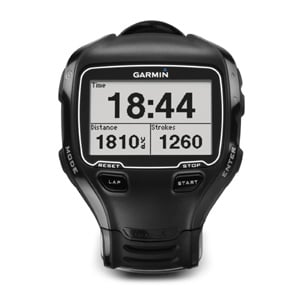Modern smart-phones have more processing power than the best desktop computers of the '90s. On top of this, they are always connected through GSM or WiFi networks and most of them include, camera, accelerometer and a GPS device. All in one small package that fits in every pocket!
There are two major limitation for the current smartphone technology: Power supply (or batteries), and display "real estate" or size of screen. These two, are also inter-dependant, since larger screens consume more energy. A large battery makes the device bulky and heavy, a large screen makes a smart-phone un-practical as well...
The power supply of a smartphone with all the fancy features described above, allows usually a few hours of usage of all the features. Internet connection and GPS consume a lot and a typical smartphone battery could sustain non stop operation for not more than 4-6 hours. Combined with the larger screen sizes, that enable the user to have access to the information (e.g GPS location on an internet retrieved Google Map) available to him by his phone, can empty a battery very fast.
Lets look at some other devices - apparel that most modern people carry with them everyday. The wrist watch is an example. There are many models of watches that include various sensors, like barometer, thermometer, accelerometer, digital compass or even GPS sensor. The battery of a wrist watch lasts way longer than any of the smart phones. Their screens are very low on energy consumption but also very specific in their use. This new generation of "smart" watches also has some connectivity features, that enable the user to transmit the stored data to a web-service or even retrieve data from remote sensors, like heart rate monitor or power meters in the occasion of a sports watch (like the one at the side picture).
Also many are wearing glasses and sunglasses. This "low" tech apparel is always in front of our eyes, protecting them from harmful light rays, particles or correcting our vision or even for pure aesthetics. Recently we have seen some new products in this segment, starting from the "heavier" sports goggles, where the user can connect wireless to the smartphone and use the goggles as earphones and microphone, or even embed a micro projector to create a Head Mounted Display (HMD) screen.
There are many more examples of new products that are exploiting the unprecedented computing power that each one of us has in his pocket with a smart-phone. There are also many sensors that have been introduced, that enhance the capabilities of smart-phones:
- Sports activities sensors (heart rate, power, stride / cadence, etc)
- Health status (heart rate, blood sugar level, etc - Personal Monitoring Tech: Invasion of the Body Trackers)
- Car monitoring services (connectivity to diagnostics - OBDII)
- Connected external mini cameras (Contour+ is such an example)
- and many more...
We should not neglect to take into consideration the market demand for new features which could be served very well by an "expanded" smart-phone. A whole new range of media and marketing possibilities will open-up, like:
- Real life social games
- Augmented reality applications
- Big data statistics and marketing (massive amounts of information coming from recording at a scale never possible in the past)
- Health wellness applications
- Safety on the road
- Public transportation information
- Urban life management
- etc...
With all these things in mind, I believe that the solution to the two major limitations of smart-phone technology, can be found in the modification of the device in the direction of peripheral connectivity and delegation of tasks. The smart-phone will be the main unit, providing connectivity and processing power, while peripheral devices will be deployed according to the needs, and will be supplying the data needed.
Connected wearable computers with standard communication protocols should be able to keep their screens off for power efficiency, while on demand could be presenting information, like caller id and SMS - micro blogging messages at the screen of the connected wrist watch. Eye-wear could work as microphone and headphone and save even more energy for the smart-phone. At an advanced stage special glasses could work as head mounted displays, feeding the user with information according to his needs. It is very important to have a standard communication protocol with all these devices, because today there are at least 3-4 major protocols available making the development and marketing of such applications very complicated. Freeing some of the processing power of the main unit with this delegation of tasks, would allow development of more demanding applications as well, like voice recognition (iPhone Siri is such an example) that would make interaction with the information so much easier.
Consumers would benefit a lot as well! Imagine if you could upgrade only the accessory you need, instead of buying a whole new device (current smart-phones) every time there is a better photo-camera, or more sensitive GPS or more powerful processor for the phone! If you break one thing, you replace only this specific component and not the whole device. It is also a bit more environment friendly set up.
Trying to fit everything in a box is working only at the initial steps of a new technology. From some point on modularity has to be introduced in order to become more efficient, flexible and release the full potential of the new technology. The market will open up as well to so many more companies with new products that will complement the pocket hidden smart-phone.
